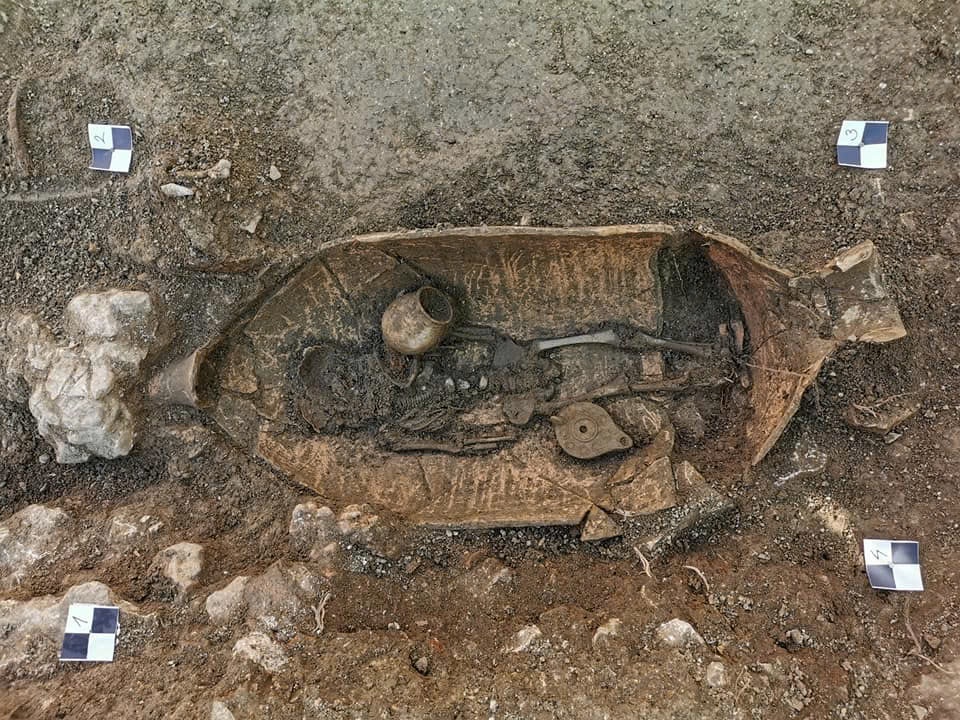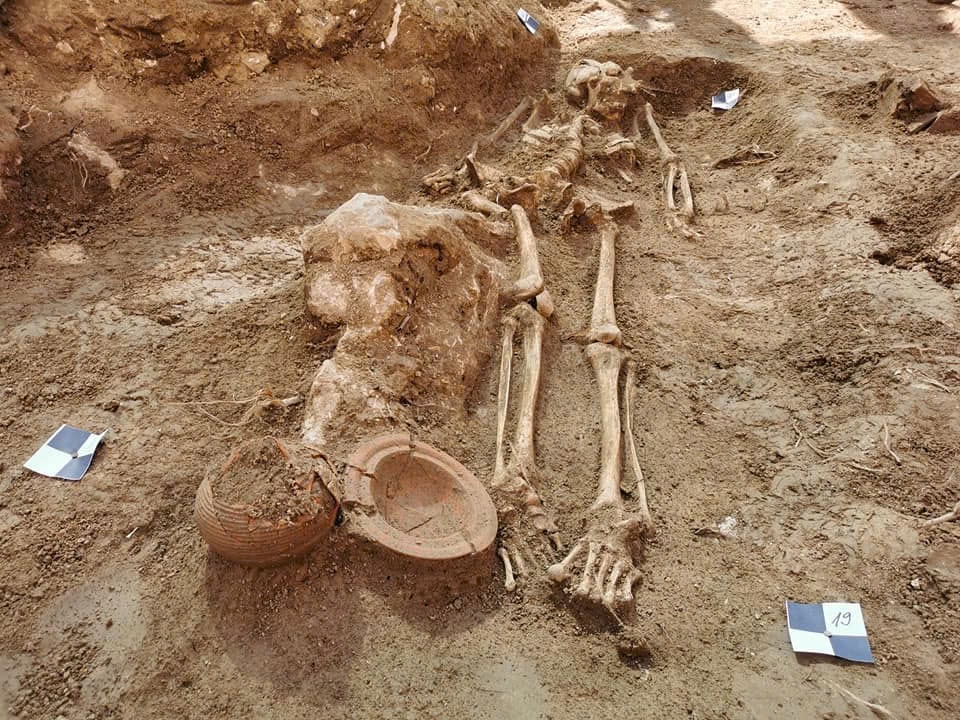An intensive archaeological investigation in the garden of the Radoevi Palace in Hvar, Croatia, has concluded after two months of meticulous work. This endeavor was initiated in preparation for the construction of the new Hvar City Library and Reading Room. What began as a routine pre-construction assessment has led to an extraordinary discovery that sheds new light on the region’s history.
Unveiling a Necropolis from Late Antiquity
The investigation unearthed a necropolis dating back to the late antiquity period, specifically from the latter half of the 4th century to the early 5th century. Within this burial site, archaeologists uncovered 20 graves containing the skeletal remains of 32 individuals. In addition to the necropolis, the team identified the eastern branch of a late antique settlement’s ramparts, including a city gate believed to date back to the end of the 5th century. This dual discovery not only expands our understanding of burial practices during this era but also offers valuable insights into the urban development of ancient Hvar.

A Closer Look at Burial Practices and Cultural Exchanges
The excavation revealed various types of tombs, ranging from simple earthenware graves to more elaborate amphorae tombs and structures constructed using roof tiles. One particularly notable find was a masonry tomb containing the remains of 12 individuals. These discoveries provide a vivid glimpse into the burial customs of the time.
What sets this site apart is the exceptional preservation of the necropolis and its accompanying grave goods. Artifacts recovered include ceramic jugs, lamps, glass vessels, coins, and other small items. These objects not only reflect the craftsmanship of the era but also provide clues about trade and cultural exchanges in the region.
Preliminary analyses suggest that the findings could significantly contribute to our understanding of local and regional ceramic production during late antiquity. Additionally, some imported goods unearthed at the site were previously undocumented in the Adriatic region, offering new evidence of trade networks and economic activity.
Uncovering Layers of Hvar’s Past
Perhaps one of the most intriguing aspects of the excavation was the discovery of an ancient wall in the deepest layers of the site. This structure is tentatively dated to the 2nd century based on African sigillate pottery fragments found nearby. The presence of this older feature highlights the continuous occupation of the area and underscores the complexity of Hvar’s historical timeline.
This site is now regarded as the richest and most significant archaeological evidence of late antique life in Hvar. The artifacts and architectural features uncovered paint a vivid picture of burial customs, societal practices, and urban development during a transformative period in the region’s history.
Collaboration and Expertise Behind the Discovery
The groundbreaking research was conducted by a team of experts, including Eduard Viskovic, Joško Barbarić, Marko Bibić, and Jure Tudor. Their work was supported by scientific advisors Dr. Marina Ugarković and Ph.D. Josip Baraka Perica. Together, they have contributed to an invaluable addition to our understanding of Hvar’s historical significance.
This discovery serves as a testament to the importance of archaeological investigations, not only in uncovering the past but also in enriching our appreciation of the cultural and historical fabric of a community. The artifacts, burial practices, and architectural remnants discovered in the garden of the Radoevi Palace provide a fascinating glimpse into life during late antiquity, further solidifying Hvar’s place as a site of historical importance.
The findings from this excavation offer more than just academic value; they invite modern audiences to reflect on the rich history embedded in the landscapes around us. Each artifact tells a story of cultural exchange, local traditions, and the everyday lives of those who came before us. From the ceramic jugs that may have held offerings to the coins that reflect trade and economic interactions, every piece contributes to a broader narrative of human connection and ingenuity.
Preserving the Past for Future Generations
As construction of the Hvar City Library and Reading Room progresses, efforts will be made to preserve and integrate the findings into the cultural and educational fabric of the community. By doing so, this discovery will not only enrich the lives of current residents and visitors but also serve as an enduring reminder of Hvar’s historical legacy for generations to come.

The success of this excavation underscores the importance of collaboration between archaeologists, historians, and local authorities in preserving and interpreting cultural heritage. It also highlights the enduring relevance of archaeology in uncovering stories that continue to shape our understanding of the past.
In conclusion, the recent discoveries in Hvar exemplify the power of archaeology to connect us with our shared history. From the intricately constructed tombs to the carefully crafted artifacts, every element of this site offers a window into a world long past. As we continue to study and preserve these findings, they will remain a source of inspiration and knowledge for years to come.





